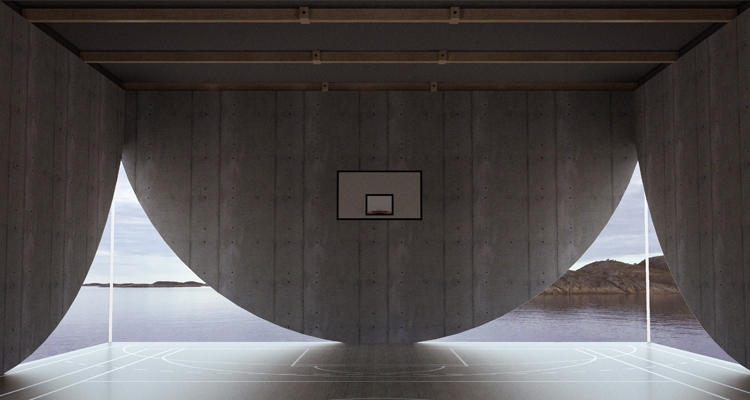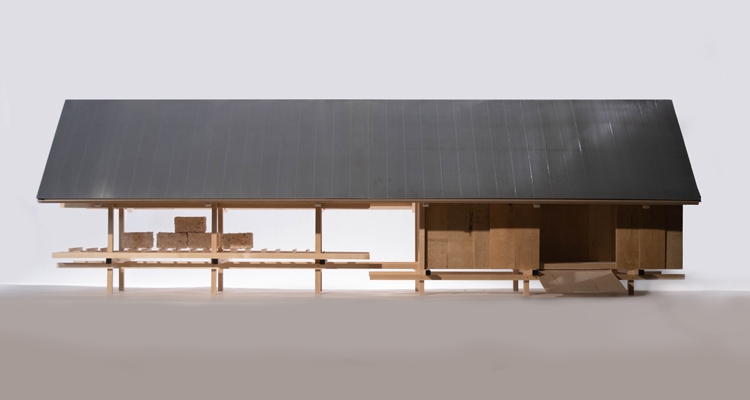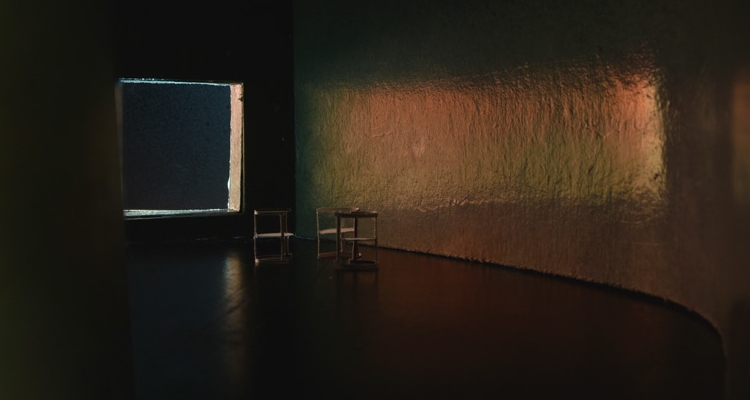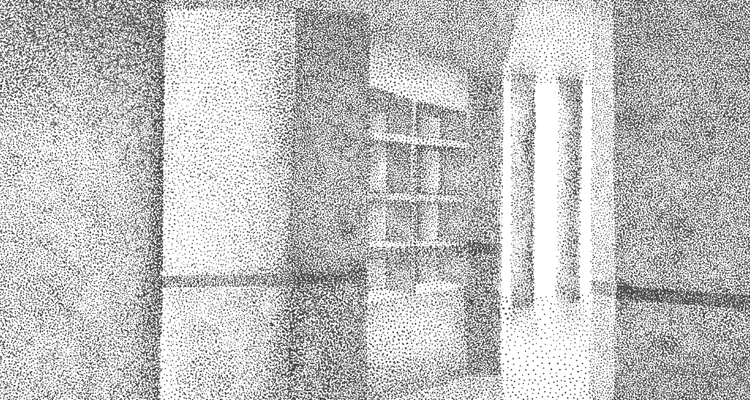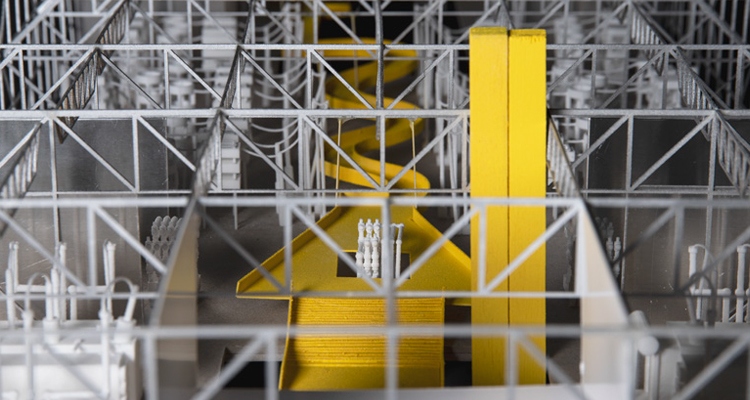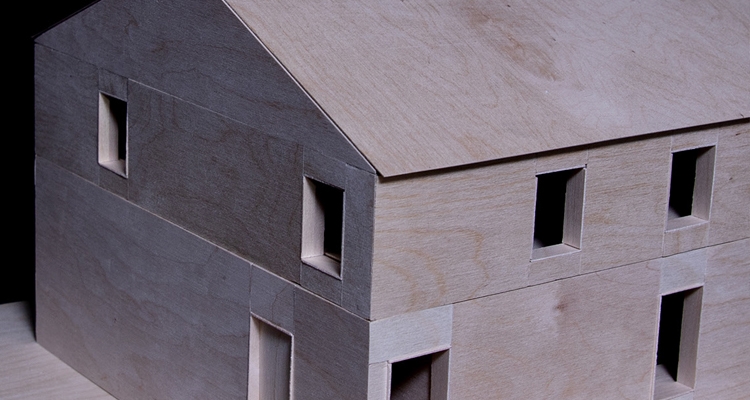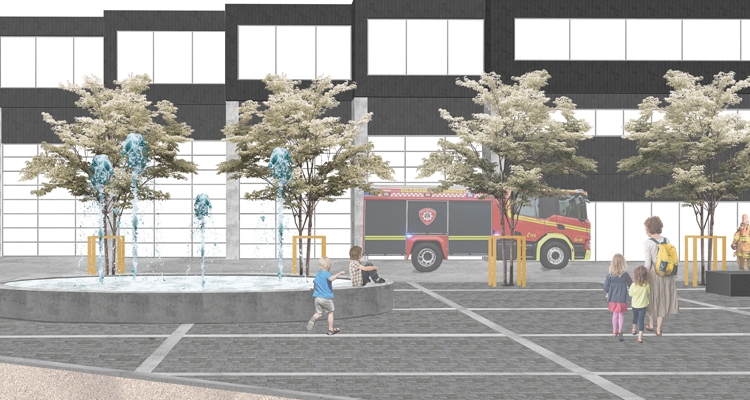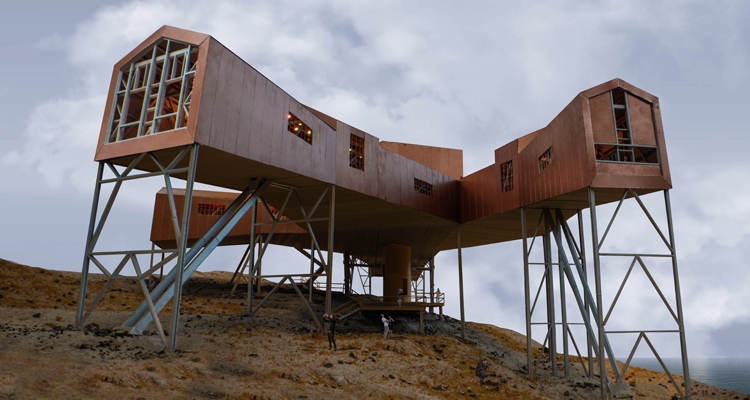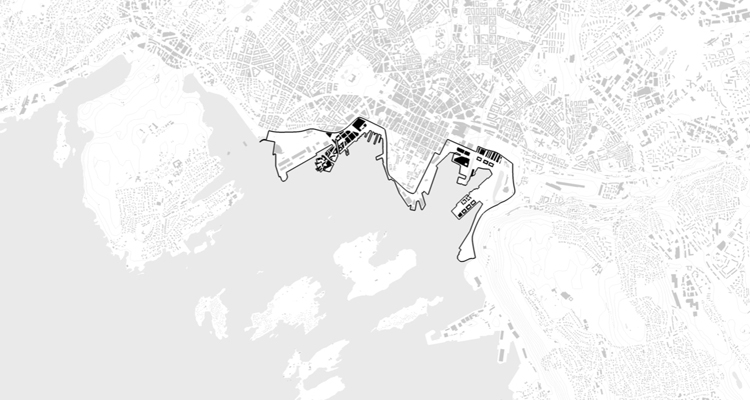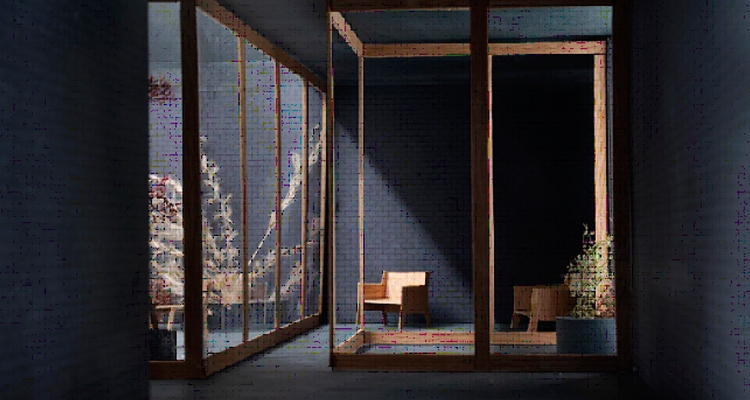In the coastal municipality of Rødøy there are 377 islanders living on eight different islands. Traditionally most of them would have their own school and function as self-sufficient communities. Today there are three schools left and children have to travel by boat every day to get to school. When a school is closed it is almost as the island gets a death sentence. This project is about re-thinking the island school in terms of form, space and community.
Diploma project
In the vast meadowland of Gotland sits the
structure which is a part of the horizontal
landscape found on site. The built landscape is
inhabited by an animal sanctuary for sheep based
on The Five Freedoms that outline five aspects of
animal welfare under human control, developed in
response to a 1965 UK Government report on
livestock husbandry.
The five freedoms for animal welfare:
1. Freedom from hunger and thirst - by
ready access to fresh water and diet to
maintain health and vigor.
structure which is a part of the horizontal
landscape found on site. The built landscape is
inhabited by an animal sanctuary for sheep based
on The Five Freedoms that outline five aspects of
animal welfare under human control, developed in
response to a 1965 UK Government report on
livestock husbandry.
The five freedoms for animal welfare:
1. Freedom from hunger and thirst - by
ready access to fresh water and diet to
maintain health and vigor.
In my proposal the servant space is the main space.
The foyer of Rogaland Theatre is the architectural element that connects the old theatre to its new extension, while as an urban infrastructure it stages its immediate surroundings and gives them a new context. The project is about the space you walk through, which is both a result of something, and something in itself.
The foyer of Rogaland Theatre is the architectural element that connects the old theatre to its new extension, while as an urban infrastructure it stages its immediate surroundings and gives them a new context. The project is about the space you walk through, which is both a result of something, and something in itself.
Through centuries, there has been a historical and philosophical exploration of blindness and a fascination with what the blind actually do ‘see’. Visual culture calls for a meditation on blindness, the invisible, the unseen, the unseeable, and the overlooked.
To question blindness is to question what seeing, and sighted experience, entails in itself.
To question blindness is to question what seeing, and sighted experience, entails in itself.
This project explores an electrical substation which uses the natural resource of narcissism and self-exposure to promote sustainable energy.
I often see objects and then I see in them a longing
for something else. For me this obsession or act is
about finding the balance between closeness and
distance. That’s also why this sentence “He loves to
be alone, as long as she is in the room next to him”
lingers close to my material acting and sensing.
And because of my obsession for seeing or seeking
longing between objects, I decided on making two
houses in the landscape where I grew up. On a site
on a hill near the ocean where cows one time ate
for something else. For me this obsession or act is
about finding the balance between closeness and
distance. That’s also why this sentence “He loves to
be alone, as long as she is in the room next to him”
lingers close to my material acting and sensing.
And because of my obsession for seeing or seeking
longing between objects, I decided on making two
houses in the landscape where I grew up. On a site
on a hill near the ocean where cows one time ate
This project is about investigating how a new fire station in Bjørvika can be close, visible and in harmony with the public.
Oslo Main Fire Station is today located in the area planned for a new Government Quarter, and therefore will be relocated out of the center of Oslo.
To guarantee the preparedness of the inner parts of Oslo there will be built a new central fire station on the fortress common in Bjørvika.
In general, the practically useful function and location of the fire stations built today has made them more isolated from the city than in the old days.
Oslo Main Fire Station is today located in the area planned for a new Government Quarter, and therefore will be relocated out of the center of Oslo.
To guarantee the preparedness of the inner parts of Oslo there will be built a new central fire station on the fortress common in Bjørvika.
In general, the practically useful function and location of the fire stations built today has made them more isolated from the city than in the old days.
Taubanesentralen (the ropeway hub) is a listed monument situated in Longyearbyen, conveying the history of a coal mining community in the Arctic. It was constructed in the late 1950s and used to transport kibbles with coal from the mines in the mountains where it was collected and passed on to the port and out to the world. The industry was in many ways constructed around the ropeway hub. Taubanesentralen is a purely practical installation, most likely shaped without thought for the esthetics.
This is a theoretical diploma that compares: Oslo’s ‘Fjord City’ and Hamburg’s ‘HafenCity’; two ongoing urban developments aimed to reconnect the inner-center with the waterfront. The objective is to scrutinize and compare the; motivations for urban development, strategies of implementation and visions for urban space and form.
In the end of Schweigaards gate in Oslo, there is a long and narrow site right next to the train tracks. The apartment building sits on a terrace looking over the trains and towards Ekebergåsen. Like the tracks, the building forms a gentle curve. A space is left where the residents and neighborhood can enjoy the terrace and view to the south. The terrace and apartments are reached from tall passages, leading in from the street. The key qualities to the apartments are those given by courtyards and loggias that punctuate the building.
